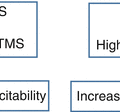© Springer International Publishing AG 2018
Stefano Masiero and Ugo Carraro (eds.)Rehabilitation Medicine for Elderly PatientsPractical Issues in Geriatricshttps://doi.org/10.1007/978-3-319-57406-6_3636. Rehabilitation of Communicative-Pragmatic Ability and Ageing
(1)
Department of Psychology, University of Turin, Turin, Italy
36.1 Introduction
The ability to communicate effectively in a social context may decrease as a consequence of the normal ageing process and may be caused by physiological and neurological changes as well as changes in the personal environment, such as a reduction in the number of social contacts and changes to the social role, as in the case of retirement, which usually characterise old age. Older adults frequently show a generalised cognitive decline [1], caused by a reduction in the cortical connectivity of the frontal lobe [2], which primarily affects high-order cognitive functions such as executive functions, i.e. planning, working memory and inhibition, and is accompanied by an alteration in hearing and speech processes. These modifications may affect the ability to use language, resulting in difficulty with name retrieval and recalling, circumlocution, reduction of the syntactic complexity of sentences and prosodic alterations, which may be accompanied by a defective emotion recognition [3]. In addition to a possible generalised cognitive decline during the normal ageing process, many neurological disorders occur in late adulthood; the most prevalent diseases that often impair communicative ability in old age are stroke, traumatic brain injury, dementia (in particular, Alzheimer’s disease) and Parkinson’s disease. Individuals with Parkinson’s disease present prosodic difficulties, such as reduced speech stress, monotonic pitch and inappropriate pauses, as well as reduced information content of a discourse, and pragmatic deficits [4]. Individuals with dementia exhibit deficits in word retrieval, circumlocution, production of irrelevant utterances, lack of coherence and rapidly shifting topics [5]. The communicative disorders reported in people with brain damage are heterogeneous in nature and vary according to the size and origin (vascular or traumatic) of the lesion, but the most prevalent disturbances include aphasic symptoms; difficulties in modulation and recognition of the tone of voice; verbosity; tangentiality; social inappropriateness; pragmatic and inferential deficits, especially in understanding the most complex forms of language (irony, metaphor, idioms); and narrative disorders [6–8].
In patients, communicative disorders are an obstacle to a full recovery from injury and the return to previous daily activities. Language and communicative rehabilitation is thus extremely important in order to limit the social consequences of communicative disorders in old age.
36.2 Rehabilitation of Communicative Disorders in Brain-Injured Patients
We will now focus on the rehabilitation of communicative disorders in older people with brain damage (BD). The first aim of communicative rehabilitation is to identify the specific profile of communicative impairment, in order to provide a rehabilitative programme focused on the patient’s difficulty. Traditionally, rehabilitative approaches have focused on the recovery of linguistic ability, but the recovery of linguistic function does not necessarily correspond to an actual improvement in the ability to communicate in a real-life context. Moreover, even if patients with BD frequently exhibit deficits that also affect non-verbal, i.e. gestural, communication, the majority of treatments focused on the verbal modality do not address the remediation of non-verbal forms of communication [9]. To overcome these limits, some authors have proposed the pragmatic approach (see [10]), such as the functional communication treatment [11], where aphasic patients are trained to implement non-verbal strategies to solve everyday communicative tasks, or the Promoting Aphasics’ Communication Effectiveness [12], in which an examiner requires patients to describe a card, with the help of the therapist, that gives him feedback and suggests compensatory strategies in order to improve the efficacy of his communicative performance. A distinctive feature of the pragmatic approach is the presence of the group, which recreates the cognitive demands set by a real-life communicative setting, such as rapid and overlapping turn-taking and promoting generalisation of the skills acquired in the training. The group also favours the creation of new social relationships, extending the social and supportive network of the participants.
Stay updated, free articles. Join our Telegram channel

Full access? Get Clinical Tree





